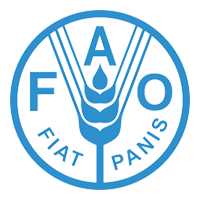SCARDA Change Management Approaches Used in the Project ‘Strengthening Capacity For Agricultural Research and Development In Africa’ and the Lessons Learned from their Application
In 2005, the Forum for Agricultural Research for Africa (FARA) commissioned an assessmentof the human and institutional capacity for research management in the National Agricultural Research Systems (NARS) in sub-Saharan Africa. The assessment identified significant weaknesses limiting relevance and responsiveness of NARS in agricultural development of Africa and recommended the need for new approaches and innovative initiatives to address these critical capacity deficiencies. The FARA review was consistent with other contemporaneous studies that identified the need for NARS to move away from a predominantly supply driven approach with minimal regard for the needs of end-users (e.g. farmers, agro-processors, traders) and to embrace approaches that fosteredwider partnerships (e.g. Mbabu and Ochieng, 2006).
In order to respond to the need to strengthen agriculture research, FARA conceived the project1 on Strengthening Agricultural Research and Development in Africa (SCARDA) with the purpose of strengthening ‘the human and institutional capacity to ensure that the NARS are better able to identify, generate and deliver research outputs’. A scoping study undertaken in a number of sub-Saharan countries at the beginning of the project confirmed that serious weaknesses in agricultural research managementwere prevalent in many national agricultural research institutes (NARIs), agricultural training colleges and faculties of agriculture(FARA, 2007). Deficiencies were identified at the organizational level in relation to shortcomings in management systems and specific management competencies, and at the individual level with lack of capacity of researchers to meet the requirements of new ways of working with a wide range of stakeholders.
In developing the SCARDA project proposal, significant emphasis was placed on
resolving shortcomings in research management through a programme of capacity strengthening
activities. This article reviews the approaches proposed by SCARDA to address capacity
strengthening for research management, how implementation took place and the lessons learned
from the implementation activities. It begins with an overview of the intended project outputs and
approach to capacity strengthening, followed by the implementation processes as undertaken in
each sub-regional organisation and finishes with the lessons learned.
Related Resources

The GCARD Road Map: Transforming Agricultural Research for Development Systems for Global Impact (FINAL)

EAHMI Conference 2013
The livestock sector is one of the fastest-growing subsectors in agriculture. Its development has greatly contributed to economic growth and poverty reduction in Southeast Asia. At the same time, the unprecedented increase in emerging and re-emerging animal diseases has had...
A model of operations capacity planning and management for administrative service [centres]
The presented model of operations capacity planning allows obtaining quantitative dimensions of the service system parameters for Administrative Services Centre. A methodology for the practical application of this model has also been presented here. The present paper aims at offering...

Consortium approach for capacity building in watershed management in Karnataka, Rajasthan and Uttarakhand : experiences and learning
The Comprehensive Assessment (CA) of watershed programs in India undertaken by the ICRISATled consortium showed that large scope exists to improve the impact for 66% of the watershed projects by addressing the issues of productivity enhancement, technical back stopping, collective...



